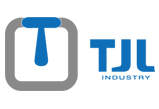Author:
Published time:2022-06-14 11:45
Reading times:470
In the fluid pipeline system, the regulating valve is the control element, and its investment accounts for about 30% ~ 50% of the pipeline engineering cost. The main functions of the valve are opening and closing, throttling, regulating flow, isolating equipment and piping system, preventing medium backflow, regulating and discharging pressure, etc. The valve is also the most complex component in the pipeline. It is generally assembled from multiple parts with high technical content. With the rapid development of petrochemical industry, most of the media in petrochemical production units have the characteristics of high toxicity, flammability, explosion and corrosion. The operating conditions are complex and harsh, the operating temperature and pressure are high, and the start-up cycle is long. Once the valve fails, the medium leakage will be caused, which will not only pollute the environment but also cause economic losses. In serious cases, the unit will be shut down and even cause malignant accidents. Therefore, in the pipeline design, the scientific and reasonable selection of valves can not only reduce the construction cost of the device, but also ensure the safe operation of production. This paper mainly introduces the selection methods of various commonly used valves, such as gate valve, stop valve, throttle valve, plug valve, ball valve, diaphragm control valve, etc.
1.Specify the purpose of the valve in the equipment or device
Determine the working conditions of the valve: the nature of the applicable medium, working pressure, working temperature, operation and control mode, etc.
2.Correct selection of valve type
The correct selection of valve type is based on the designer's full understanding of the whole production process and operating conditions. When selecting valve type, the designer should first master the structural characteristics and performance of each valve.
3. Determine the end connection of the valve
In threaded connection, flange connection and welded end connection, the first two are most commonly used. Threaded valves are mainly those with nominal diameter less than 50mm. If the nominal diameter is too large, it is very difficult to install and seal the connecting part. The flange connected valve is easy to install and disassemble, but it is bulkier and more expensive than the threaded valve, so it is suitable for the connection of pipes with various diameters and pressures. The welded connection is applicable to the condition of load cutting, which is more reliable than the flange connection. However, the valve connected by welding is difficult to disassemble and reinstall, so its use is limited to the occasions where it can normally operate reliably for a long time, or where the service conditions are harsh and the temperature is high.
4.Selection of valve material
When selecting the materials of the shell, internals and sealing surface of the valve, in addition to considering the physical properties (temperature, pressure) and chemical properties (corrosivity) of the working medium, the cleanliness of the medium (whether there are solid particles) shall also be mastered. In addition, relevant national and user regulations shall also be referred to. The most economical service life and the best service performance of the valve can be obtained by correctly and reasonably selecting the material of the valve. The sequence of valve body material selection is: cast iron - carbon steel - stainless steel, and the sequence of seal ring material selection is: Rubber - Copper - alloy steel -f4.
5.other
In addition, the flow rate and pressure grade of the fluid flowing through the valve shall be determined, and the appropriate valve shall be selected by using the existing data (such as valve product catalog, valve product samples, etc.).











;)
;)




